Burmilla: features of cats, living conditions and breeding

The flexible and incredibly graceful cat of the Burmilla breed looks very impressive - you can fall in love with it at first sight and for the rest of your life. Usually, cats of rare breeds are acquired for a variety of purposes - someone wants to get a small bundle of happiness in the house, someone cares about regalia and victories at exhibitions, and still others dream of a friend who will brighten up lonely evenings. Burmilla meets each of these requirements.



Origin story
Each pedigree cat has its own history of origin. Of all the representatives of the feline family, the Burmilla cat undoubtedly deserves special attention of breeders - an animal with aristocratic roots and a rather amusing history that dates back to 1981. At that time in Great Britain, in the house of Baroness Bickford-Smith, there lived a beautiful Burmese cat, who was waiting for mating with a male of the same breed.
At the same time, her friend, another cat lover, dropped in to visit the Baroness, and he came not alone, but together with his pet, a Persian cat. It so happened that the maid forgot to lock the door and the cute cat ran out into the corridor, where she met a handsome Persian. This meeting ended with the pregnancy of the pet, which almost led to the dismissal of the housekeeper.
But after three months, kittens of amazing beauty were born, after a while the Baroness noticed that these babies have an unusually docile soft character, so unusual for the Persians.
The baroness immediately changed her anger to mercy, forgave her maid and presented her with one kitten as an excuse. The young father had a chinchilla color, so his variety was called the chinchilla Persian - from the combination of the names of both animals the word "Burmilla" was obtained - this is how the representatives of this new breed have since been called.


Description
Burmilla is considered one of the most elegant cats with exquisite manners. Her torso and limbs are perfectly proportioned, her muzzle is very neat, and her look is gentle, a little naive. According to current breed standards, Burmilla has the following physical characteristics:
- medium-sized body;
- developed muscles;
- the weight of an adult cat is 4–7 kg, the weight of males and females is approximately the same;
- the tail is long, narrowed towards the end;
- the limbs are strong, the pads are round, black;
- small, round head, slightly protruding cheeks;
- the nose is small, pink;
- the eyes are expressive in the shape of a crescent, the outline is black;
- a dark M-shaped speck is visible between the eyes in the forehead area;
- eyes can be amber, blue, green, or tortoiseshell; rare, but there are cats with reddish irises;
- the coat is soft, rather pleasant to the touch.
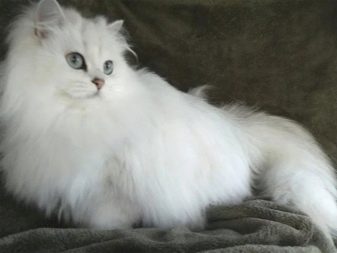
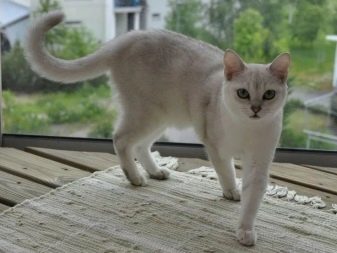
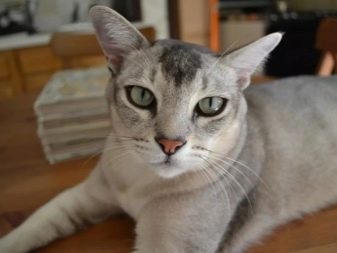
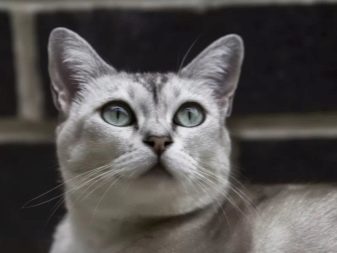
Depending on the breed, the coat can be long or short. It is worth considering in more detail.
- Shorthair cat it is distinguished by a glossy, almost silk-like coat, as well as a large undercoat, which visually lifts the main cover. It is usually silvery in color, but a slight golden tint is acceptable. The coat itself is most often lilac, blue, chocolate or cream - pigmented from below, and more pronounced coloration on top.
- In long-haired varieties Burmilla have Australian roots. Outwardly, such an animal resembles the Persians, who are their first ancestors, but there are quite significant differences. So, the Burmilla has a fluffier tail, the muzzle tapers from the temporal region towards the jaw, and the ears are turned up with an inconspicuous forward inclination.
Important! When creating comfortable living conditions, cats live from 16 to 18 years.
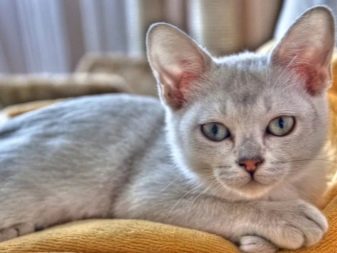
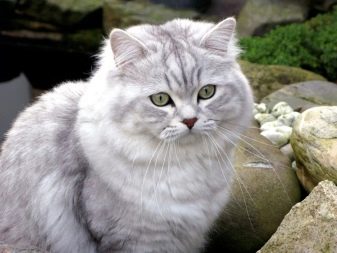
Character traits
The breeders assure that the character of the Burmilla is truly angelic. Little kittens captivate children and adults with their always complacent mood, cheerful disposition, endless love of life. They adore active games, eagerly seek the affection of their owners - in return for their care, they are ready to present their large and small owners with endless love and affection.
Burmillas are extremely inquisitive, it is important for them to constantly be in the center of attention, while they devote very little time to sleep. These pets cannot stand loneliness, adore communication and quite quickly establish contact not only with all family members, but also with other pets. The main character traits of Burmillas are tactfulness and friendliness.

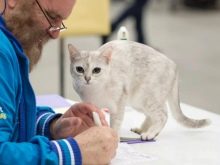
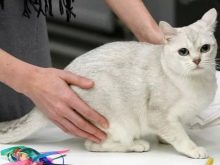
These cats will never harm a person, if only by defending themselves in response to aggression. For kids, she can become a playmate and at the same time a nanny - such animals can be left without fear even with the smallest children, without fear that they will pounce and scratch. Burmillas are very brave, while energetic cats, fear is alien to them - they easily climb the highest fences and trees, and then jump down with passion.
It has been proven that cats of this breed able to understand their breeder's commands. At the same time, they are delicate and unobtrusive, however, they have "bouts of love", during which they can tire their owner with excessive displays of love and tenderness.
Important! Alone, such cats experience severe stress, which leads to illness, so leaving such a kitty alone for a long time is extremely undesirable.
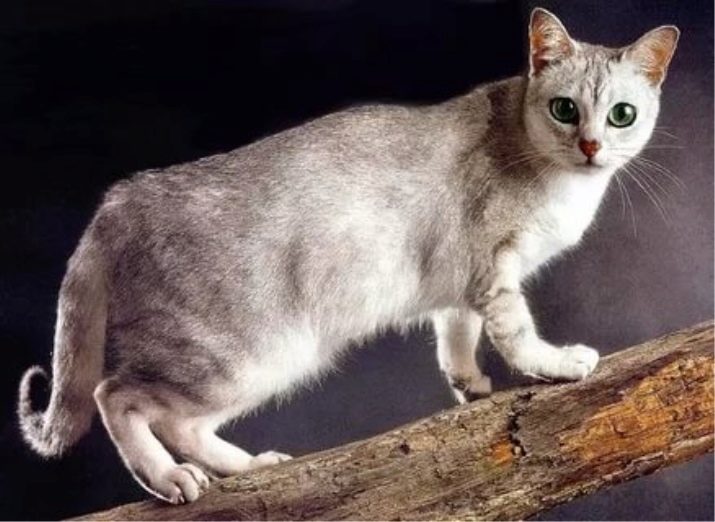
Burmillas, as a rule, sleep on the owner's bed. In general, these are good-natured cats with a gentle character.Like all other representatives of the feline family, Burmillas are interested in literally everything, so they can be walked exclusively on a leash and only in the presence of the owner. Otherwise, the thirst for discovery can take your pet quite far from home. These cats are often called psychologists, as they, like no other pet, feel the mood of their master and in a moment of sadness can cheer, support him.

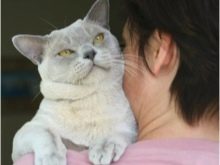
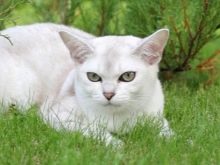
Colors
Burmillas have a fairly wide color palette, there are more than enough colors and colors in animals of this breed, but therefore they are all similar to each other - there is a feeling that an ordinary gray kitty has put on a cape of a slightly darker shade. The colors of the capes include the following:
- Bombay;
- chocolate;
- ginger;
- tortoiseshell;
- speckled blue;
- lilac;
- brindle;
- smoky;
- speckled black.
Thus, we can safely say that Burmillas have a fairly wide range of colors, but at the same time each of them has a pronounced chinchilla shade.
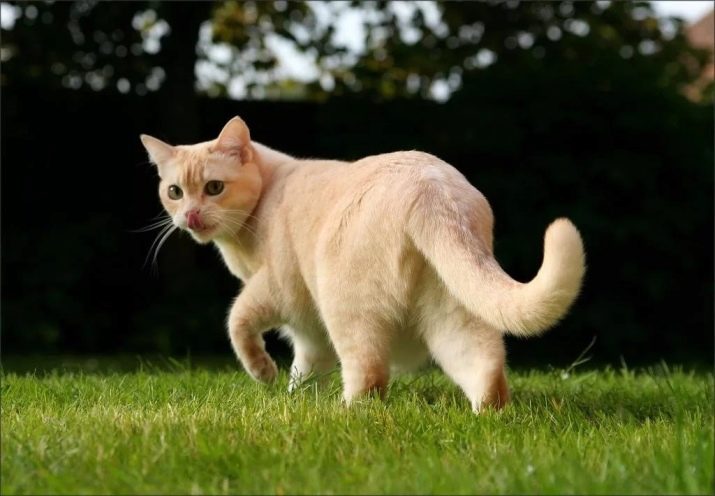
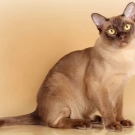

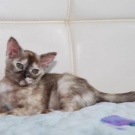

Conditions of detention
Another undoubted advantage of Burmillas is that they do not require too painstaking care. The owner is only required to regularly carry out such standard procedures as:
- combing wool - usually this is done no more than once a day, cats of these breeds have rather high-quality wool, so there is no need for daily brushing;
- ear cleaning - it is advisable to accustom your pet to such a procedure from early childhood;
- clipping - probably there is no cat that loves this procedure and the Burmilla will not be an exception, the easiest way to carry out such manipulations is with a special scratching post;
- eye cleansing - usually in the morning in the eyes of Burmillas you can notice accumulations of dirt, it is easy to get rid of them, you just need to run it with a cotton pad dipped in tea leaves;
- walking - the pet should go for a walk, at least every two days, but preferably daily.

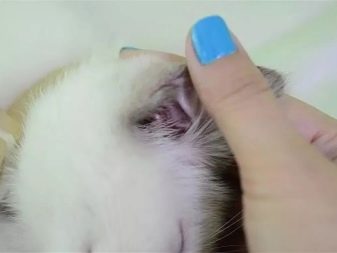

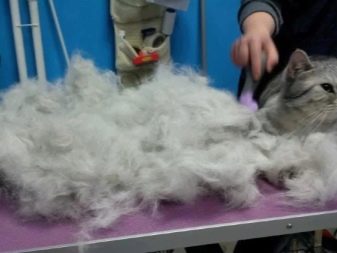
Compliance with these simple rules for caring for the burmilla will allow the animals to fully grow and develop. However, you should know that Burmillas are susceptible to such a serious disease as polycystic disease; if treatment is not started in a timely manner, it often leads to renal failure.
Symptoms such as loss of appetite, lethargy, and rapid weight loss can indicate the onset of the disease. In addition, the pet starts going to the litter box quite often. If you notice any of these signs, you should immediately contact your veterinarian. At the clinic, the cat will take blood for analysis and make an X-ray, after which they will make a final diagnosis and prescribe therapy.

Feeding
You can feed Burmilla with both natural food and industrial formulations. The main thing is that the food is balanced and provides the pet with the necessary vitamins, micro- and macroelements. A lack of them can lead to serious malfunctions in the work of internal organs, but at the same time, you should not allow an excess of nutrients, especially minerals and carbohydrates, which often causes cardiovascular pathologies in a pet. When using prepared feed, it is best to pay attention to the formulations low in fat. If you feed your pet straight, then you should definitely introduce into the diet vitamin and mineral supplements.
It is better to start feeding small kittens with ready-made formulations, but you need to choose only the highest quality ones, otherwise the unformed digestive system of the animal will suffer great damage. If you plan to switch it to natural food in the future, then it is best to start complementary foods with milk porridge and low-fat cottage cheese, as well as boiled chicken yolk.
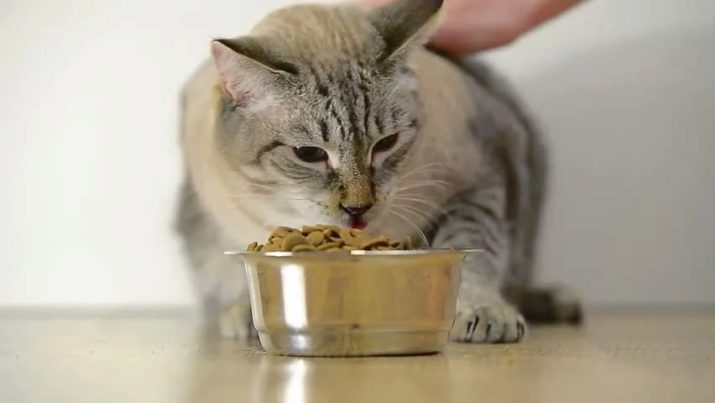
The final transfer of a kitten to adult food is possible only in two months - earlier, you can injure the animal, at this time such foods should be included in its diet as:
- meat - it is better to give preference to low-fat foods such as chicken, beef, turkey or rabbit; these products should make up at least 2⁄3 of the total diet of cats;
- offal - Liver, heart or udder are suitable for cats; such products are given no more than twice a week;
- fish all cats love, but you cannot abuse it, since there is a lot of phosphorus in it - its excess causes urolithiasis; the product is introduced into the menu once a week, using low-fat marine fish;
- porridge - cats love oatmeal, wheat, semolina and corn grits, it is best to cook them in water without adding salt, sugar and oil; you can make porridge with meat - such a dish, most likely, will suit your pet's taste;
- vegetables - contrary to popular belief, Burmillas really like juicy vegetables and young greens; it is best to add chopped carrots, cabbage, zucchini, cauliflower, and sprouted grains to the main feed from time to time.
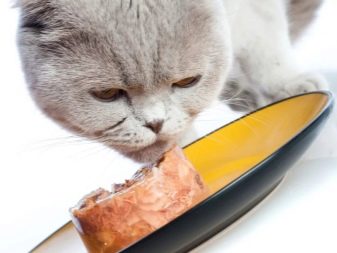

If you prefer professional feed, then the choice is better to make in favor of expensive products of the highest quality, since they include essential macronutrients, vitamins, and also contain additives that help prevent urolithiasis. In expensive premium food, only natural meat ingredients are used, and additives are included in the food that help remove hairballs from the gastrointestinal tract.
Products are especially popular among breeders. Hill, Acana, and Pronature... Feeds differ in ideal composition Royal Canin, because they are fully assimilated, contain various herbs, berries, fruits, as well as all the necessary vitamins.



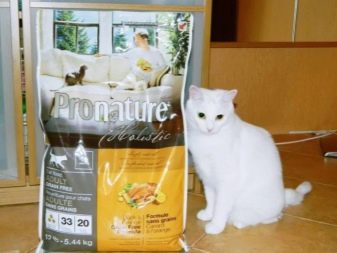
Let us dwell in more detail on the products prohibited for Burmillas.
- Milk... Many people believe that all members of the feline family love to feast on milk. However, the body of this animal assimilates the product only at a very young age - when the kitten reaches two months, the production of an enzyme responsible for the digestion of milk stops, therefore its inclusion in the menu is undesirable. But fermented baked milk, sugar-free yogurt, cottage cheese and other fermented milk products will bring your pet a lot of benefits and improve the digestion process.
- It is strictly forbidden to feed Burmillas exclusively with fish. The boiled product can be given no more than once a week.
- Any preservatives, sweets are toxic for them: stew, sprats, sprat in tomato sauce, canned vegetables, as well as chocolate, biscuits and cakes should not be given to cats. Even a small amount of them can cause serious health problems in pets.



Breeding
Breeding cats of this breed is not an easy task. The fact is that this is one of the rarest and most expensive breeds, the breeding of which in our country began to be engaged only a few years ago. Therefore, if you want to purchase a fluffy pet, it makes sense to contact foreign nurseries. Prices for burmillas start at 30 thousand rubles. If a kitten is sold without pedigree and the buyer does not intend to take part in exhibitions and contests, then the cost may be lower.
The final price also depends on the characteristics of the animal itself, in particular, gender - females are always valued more than males. The final cost can also be influenced by the type, color clarity, class, availability of paperwork and potential difficulties with transportation. Since the breed is still little known, it is best to buy a kitten in trustworthy catteries with a solid reputation.
An attentive and caring owner of Burmillas, as a rule, animals live for many years, giving all family members their love, affection, friendliness, therefore it is so important to provide the pet with comfortable living conditions, good nutrition, good attitude, do not forget about preventive examinations and vaccinations.
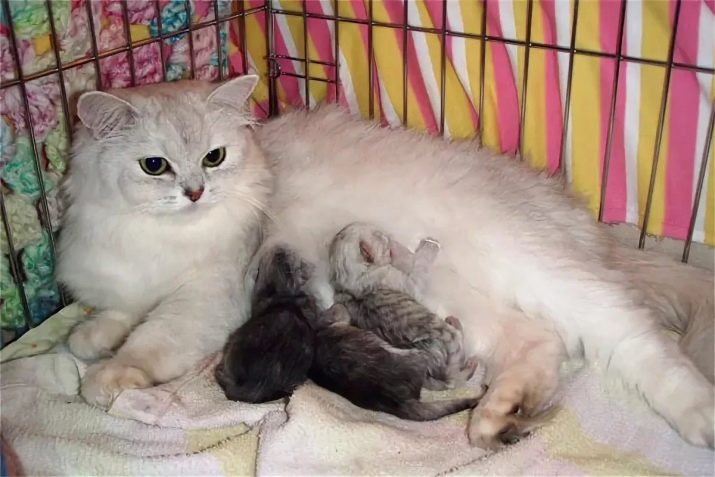
For the features of this breed of cats, see the following video.
































